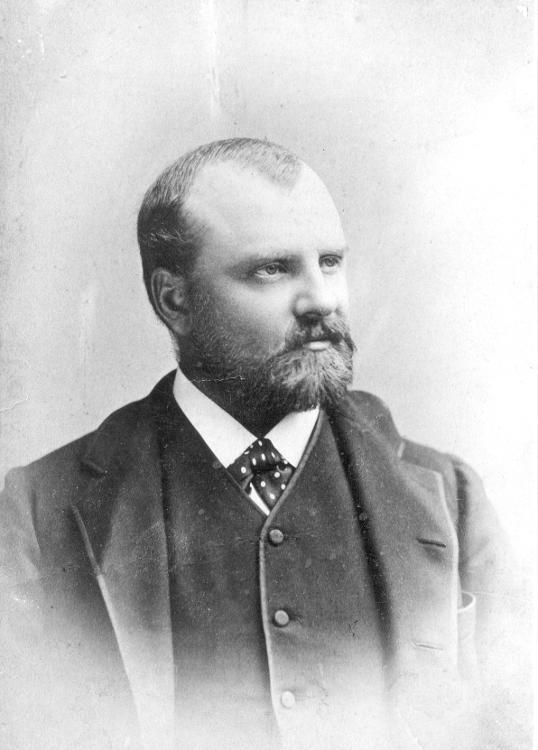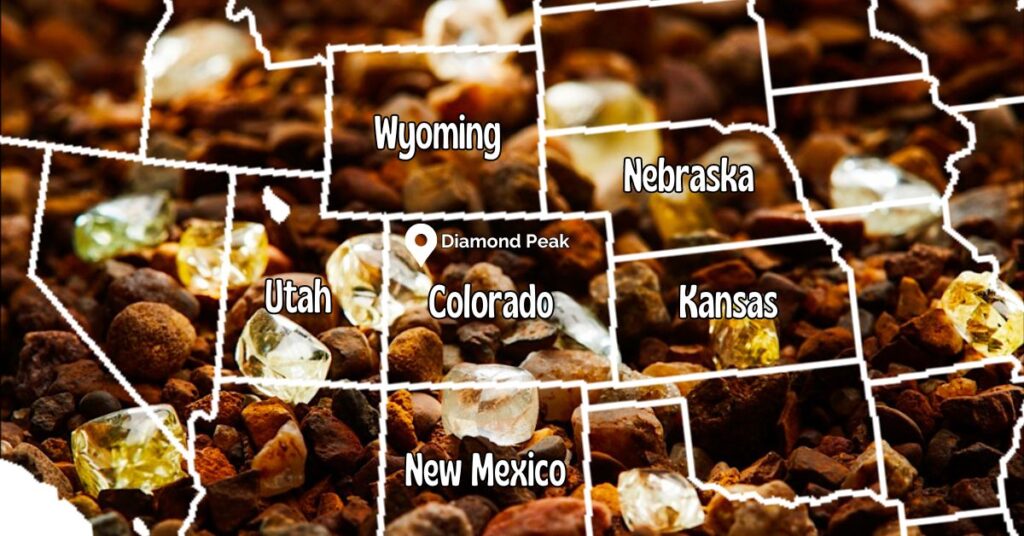In 1871, Phillip Arnold and John Slack entered the Bank of California in San Francisco. They were clad in worn clothing and covered in a generous layer of dirt and grime. One of them clutched a leather bag. They wanted to deposit it for safekeeping. The teller summoned a manager who told the pair that before the bank could take possession, they needed to know the contents of the bag, which turned out to be uncut diamonds. Asked where they got them, Arnold replied, “Indian Territory.”
Bank founder William Chapman Ralston and some friends convinced the reluctant duo to give them more details of their find. In short order, he had signed up several investors, including financers, a newspaper publisher, a couple of Civil War generals, and a European baron thrown in for good measure.
Unknown to the investors, Arnold and Slack were con artists and cousins from Kentucky, and the diamonds came from the Diamond Drill Co., where Arnold worked as a bookkeeper. The syndicate gave Arnold and Slack a $50,000 down payment, which they used to travel to England to buy additional uncut gems.
Ralston and company hired a mining engineer, Henry Janin, to evaluate the find. In June of 1872, Arnold and Slack led Javin and three investors to a mesa in northwest Colorado, which was later named Diamond Peak. The scammers had “salted” about an acre with diamonds, rubies, emeralds, and sapphires. The four unsuspecting dupes found a bounty of uncut stones lying on the ground or just beneath the surface.
King of the 40th Parallel
The hero of our story comes into the picture, unless you’re rooting for the swindlers, in the form of Yale-educated geologist Clarence King. His survey team had a chance encounter with Janin on a train bound for Oakland. They had just completed a geological exploration of the 40th Parallel, which had taken them through the area where the diamond field had been discovered. They must have had but one thought: “How the hell did we miss that?”

King immediately smelled a rat, prairie dog, or whatever suspicious animal suits your fancy. If you’re thinking that King was James Bond with a pickax, you’re close, more like Sherlock Holmes with a pickax. With the information from Janin, his knowledge of the area, a few clever deductions, and some riding around on mules. He and two of his men found the diamond field.
There, they found diamonds and rubies but only in disturbed ground. When they dug a 10-foot trench, they discovered no gems further down. The diamond field was no natural deposit; it was a scam. King immediately departed for San Francisco, where he met with Janin and the directors of the ill-fated San Francisco and New York Mining and Commercial Company.
On Tuesday, 26 November 1872, the gemstones hit the fan, and a torrent of blame was released. The San Francisco Chronicle devoted all of page three to the hoax. Beside a map of the western United States there were 18 headlines. The first four read: Unmasked! The Great Diamond Fiasco. The Mammoth Fraud Exposed. Astonishing Revelations.
Arnold returned to Elizabethtown, Kentucky, became a banker, and was forced to return some of the money. Slack disappeared. Author Bruce A. Woodard thinks Slack moved to White Oaks, New Mexico, and became an undertaker.
If you enjoyed this story, please consider sharing it with a friend or clicking on one of the social sharing icons above or below the post. Comments are always welcome. If you have a topic or crime you’d like to see covered, email me at editor@blueridgetruecrime.com.
Check out my new book, Blood on the Blue Ridge: Historic Appalachian True Crime Stories 1808-2004, cowritten with my friend and veteran police officer, Scott Lunsford on Amazon. Buy it here!
I also have a Substack newsletter, A History of Bad Ideas, where I write about poorly thought-out ideas, misguided inventions, and dire situations throughout history created by people who frankly should have known better.
Sources
Smithsonian Magazine, The Great Diamond Hoax of 1872 by Robert Wilson June 2004
San Francisco Chronicle, Tuesday, November 26, 1872, Page 3, “Unmasked! The Great Diamond Fiasco”
The New York Times, Thursday, December 05, 1872, Page 1, “The Diamond Swindle”
Chicago Tribune, Wednesday, December 04, 1872, Page 8, “The Great Diamond Fraud”
Fancy Colored Rough Diamonds Ellendale (WikiMedia Commons)
U.S. States PNG Map Overlay (WikiMedia Commons)

